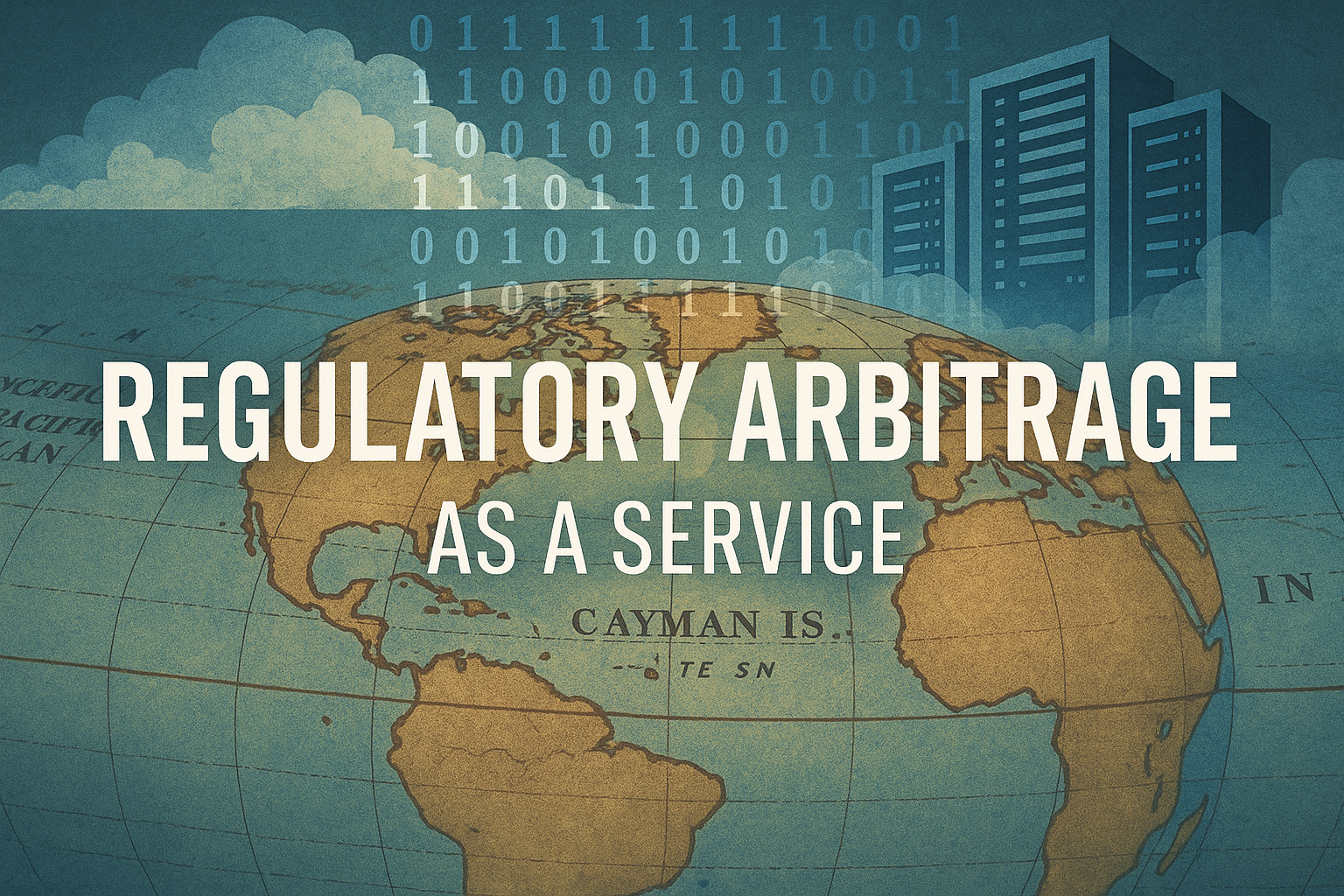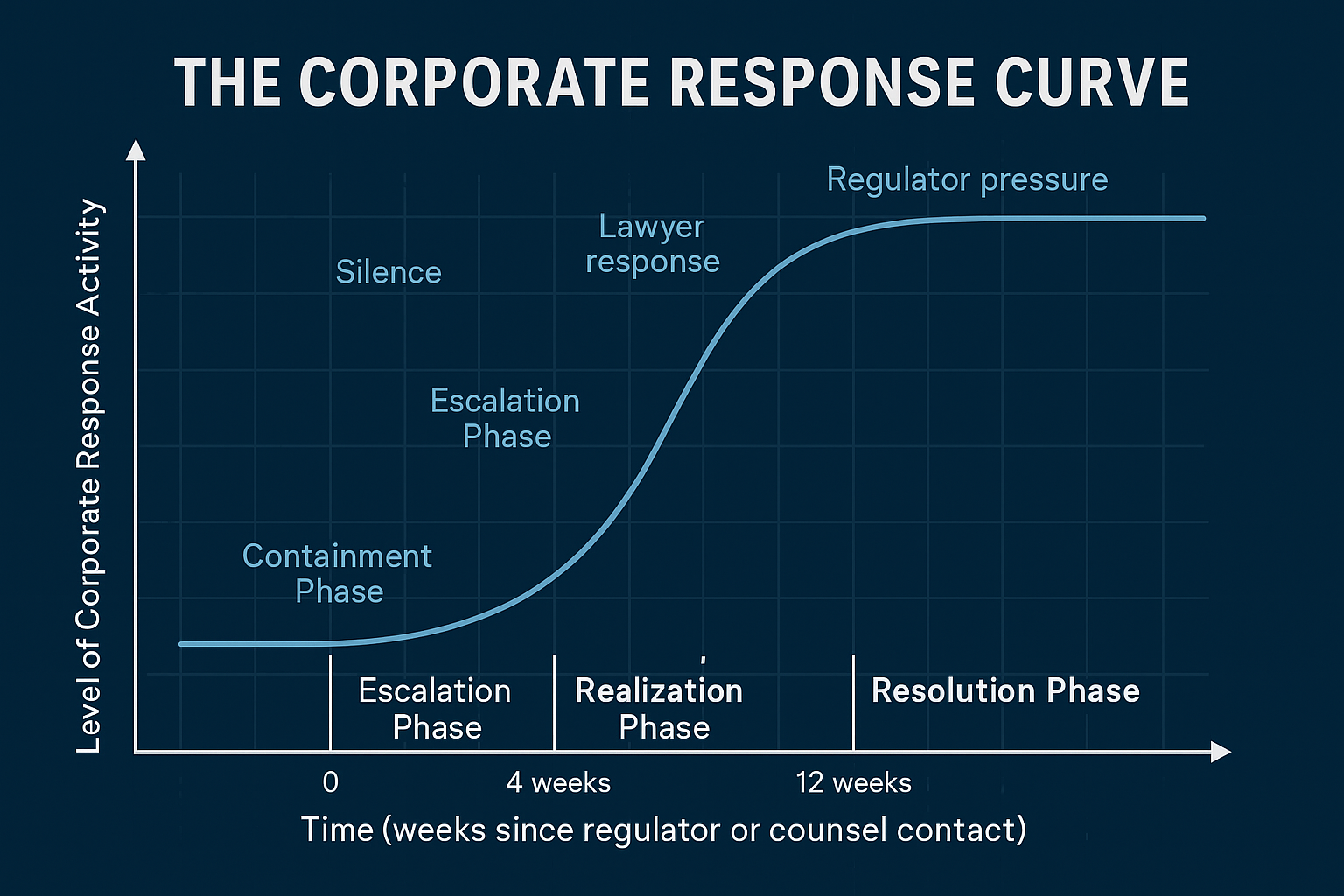Table of Contents
How Offshore Jurisdictions and Corporate Service Providers Industrialized Legal Evasion
Overview
Regulatory arbitrage, the practice of exploiting gaps or inconsistencies between legal systems, has existed as long as regulation itself.
But in the twenty-first century, this tactic has evolved from isolated opportunism into an organized, scalable industry.
What once required deep legal ingenuity is now available as a service.
Offshore corporate registries, white-label compliance firms, and multi-jurisdictional advisors offer plug-and-play packages that help companies move assets, profits, or liabilities across borders faster than regulators can track them.
This phenomenon, which we call Regulatory Arbitrage as a Service (RAaaS), underpins much of the systemic opacity seen in global finance today.
From Loophole to Marketplace
Decades ago, regulatory arbitrage relied on bespoke structuring: tax inversions, trust layering, or shell company networks designed for a single client.
Now, entire jurisdictions market these capabilities at scale.
- Offshore formation firms advertise one-day incorporations and nominee services.
- Corporate agents provide “substance packages”, rented offices and proxy directors to meet local presence tests.
- Digital residency programs allow companies to claim jurisdictional benefits without any physical or operational footprint.
These offerings are no longer incidental legal work; they form the backbone of a jurisdictional services economy worth billions annually.
Why It Matters
For regulators, this evolution creates a moving target.
Financial authorities build compliance regimes around national law, while the arbitrage industry builds products to flow around them.
The result:
- Accountability becomes distributed to the point of disappearance.
- Cross-border enforcement collapses under procedural incompatibility.
- Victims, investors, consumers, or counterparties, find themselves navigating a maze of entities that all insist they are not responsible.
This dynamic does not depend on illegality; it thrives in the gray zone between legal definitions and regulatory jurisdiction.
The Offshore Supply Chain
Just as physical goods rely on global logistics, jurisdictional evasion relies on its own supply chain.
A typical RAaaS transaction may involve:
- Corporate Formation Provider: establishes a shell or holding company in a low-disclosure jurisdiction.
- Trust or Nominee Service: obscures beneficial ownership through layered trustees.
- Banking or Fintech Gateway: enables liquidity and transfers between onshore and offshore accounts.
- Legal and Audit Fronts: produce surface-level compliance documentation to satisfy basic due-diligence inquiries.
Each layer adds plausible deniability while erasing transparency.
Consequences for Investors and Regulators
When these structures fail, as they inevitably do, no single entity holds the full chain of accountability.
Regulators issue statements of “limited jurisdiction.”
Victims are told to contact foreign authorities.
Meanwhile, service providers continue onboarding new clients under identical frameworks.
This structural fragmentation undermines:
- Consumer restitution, because losses cross multiple legal systems.
- Regulatory credibility, because enforcement stops at the border.
- Market fairness, because compliant actors compete at a disadvantage.
Toward a Transparency-First Model
If RAaaS industrialized opacity, then Transparency as Infrastructure (TaI) must industrialize accountability.
That means:
- Shared international registries of beneficial ownership.
- Real-time disclosure of cross-jurisdictional licensing and supervision.
- Public visibility into corporate service providers and their client networks.
Until that shift occurs, jurisdictional evasion will remain a lucrative global export and a persistent threat to investor protection.
Disclaimer:
This article is published for educational and public-interest purposes. It does not allege unlawful conduct by any specific party and should not be interpreted as legal advice.





